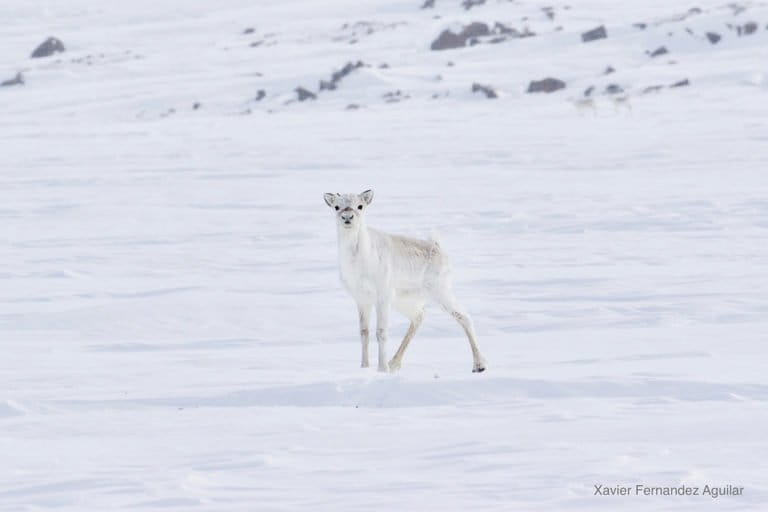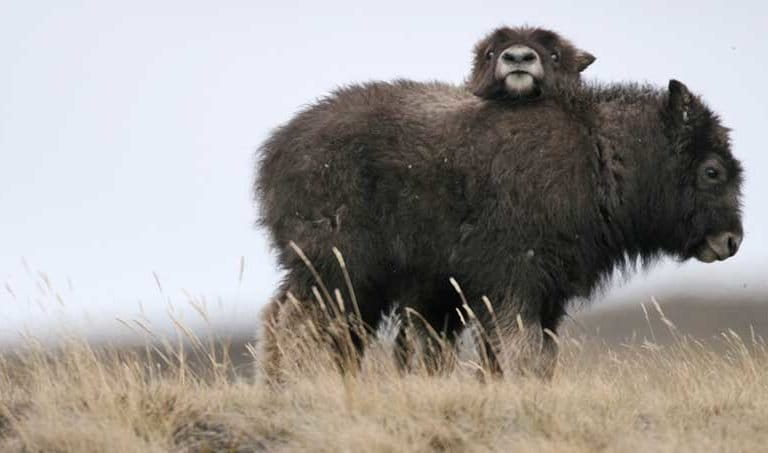The Greenland Ice Sheet is losing mass, and there may be no way to stop it, scientists have concluded. Even if large amounts of snowfall return to the ice sheet,…
Catching a caribou isn’t easy. In some locations, it involves flying around in helicopters, shooting the animal with a tranquilizer dart, making it safely to the ground, and placing a…
The solitude of the north is changing. George Angohiatok noticed this quite graphically a decade ago when, after returning to Iqaluktuuttiaq (or Cambridge Bay, as it was renamed by settlers), he observed…
The Arctic is setting records for low sea ice extent for this time of year, with the 2020 refreeze now 500,000+ square kilometers behind a record set in 2019 — a sign the region may be entering a new climate regime.
2020 didn’t eclipse all-time record-holder 2012, but it came pretty close; also, the Arctic’s growing heat is likely intensifying Asia’s extreme weather, while waters just beneath the ice are getting increasingly warm.
Narwhals are Arctic-dwelling whales with a unique feature: the males have spirally, sword-like tusks that can extend up to 3 meters (10 feet). But these magical-looking creatures are facing a…
Habitat loss and climate change are often blamed for the decreasing numbers of migratory shorebirds in a major flyway in the Asia-Pacific region in recent years. But it might be…
Temps as high as 100 degrees Fahrenheit in Siberia have triggered record Arctic sea ice melt, raging wildfires, permafrost thaw, and an Arctic oil spill.
April and May saw record intense Arctic heat. Now some scientists are asking whether an absence of industrial sulfate aerosol pollutants, which reflect solar energy, could be the cause.
Large biomes, like the Amazon rainforest, have closely linked habitats and species, which could lead to a domino effect and a rapid ecosystem collapse; even small effects can cause a crash over time.
Multiple studies show that Arctic warming is altering temperate and equatorial weather. Now, new research finds that Antarctic ice melt could be a major tropical change agent too.
Scientists are already warning of gradual permafrost CO2 releases; but future abrupt thaws could send huge amounts of methane skyward, causing a surge in global temperatures.
On today’s episode of the Mongabay Newscast, we listen to recordings of marine mammals in the Arctic with Dr. Howard Rosenbaum, the director of the Wildlife Conservation Society’s Ocean Giants…
A 4-year bioacoustic study of marine mammals in the northern Bering Sea will help scientists track the impacts of global climate change on Arctic ecosystems. Researchers with WCS (Wildlife Conservation…
New research offers early evidence that the Arctic and tropics are no longer a world apart; melting sea ice may be intensifying equatorial trade winds and emergence of El Niño.
The camera traps that ecologist Annette Fayet had set up didn’t provide the clues she had hoped to find about puffin diets and nesting behavior. What they did provide, though,…
For seabirds, an Arctic Ocean with less sea ice could provide some tantalizing alternatives to the long-haul flights that some undertake each year. In a recent study, ecologist Manon Clairbaux…
Reindeer and caribou populations have been declining dramatically over the past few decades. But one subspecies of reindeer seems to be doing better, a new study has found. The wild…
New report reveals how both the Arctic and Antarctic are heating up and changing dramatically amid ongoing, but largely insufficient, UN climate negotiations.
Climate change could be carving a path for dangerous diseases through the Arctic, allowing them to spread between species of susceptible marine mammals, according to a recent study. Researchers have…
As 2019 melt season nears end, 40 years of satellite data reveal a rapidly warming polar region, with no end in sight, plus multiple impacts for a changing planet. This story has been updated.
High heat and conditioning throughout this year’s melt season put a hurting on Arctic sea ice, but it may still take big storms or more heat to break 2012 extent record.
Explorer Robert Swan is the first person to walk to both the North and South Poles unassisted. Those expeditions inspired him to dedicate his life advocating for the protection of…
A very hot Arctic spring has caused sea ice volume to fall rapidly to a new record, putting 2019 in position to challenge 2012 for lowest ice volume and extent this September.
Though the trend can still change, Arctic sea ice extent could be on track for a record melt year, impacting the jet stream and bringing more extreme weather to the U.S. and world.
Sea ice melt is nearly two weeks ahead of past records for early April, while a new study finds that the Arctic system is trending away from its 20th century state into an unprecedented state.
Though sea ice extent was up across much of the Arctic at winter maximum, the Bering Sea lost an ice area the size of Montana, and Greenland has been receiving winter rains.
In 1998, Douglas Clark witnessed Manitoba’s second recorded grizzly bear (Ursus arctos horribilis) sighting of the century. Then a warden in Canada’s Wapusk National Park, he remembers swooping down near…
A new analysis of over 70 years’ worth of shorebird population data suggests that climate change has altered the migratory birds’ Arctic safe haven to such a degree that it…
Dead whales are a nutritional boon for polar bears, and they’ve likely helped bears survive lean periods during warm spells in the past when much of the Arctic was ice-free.…





































